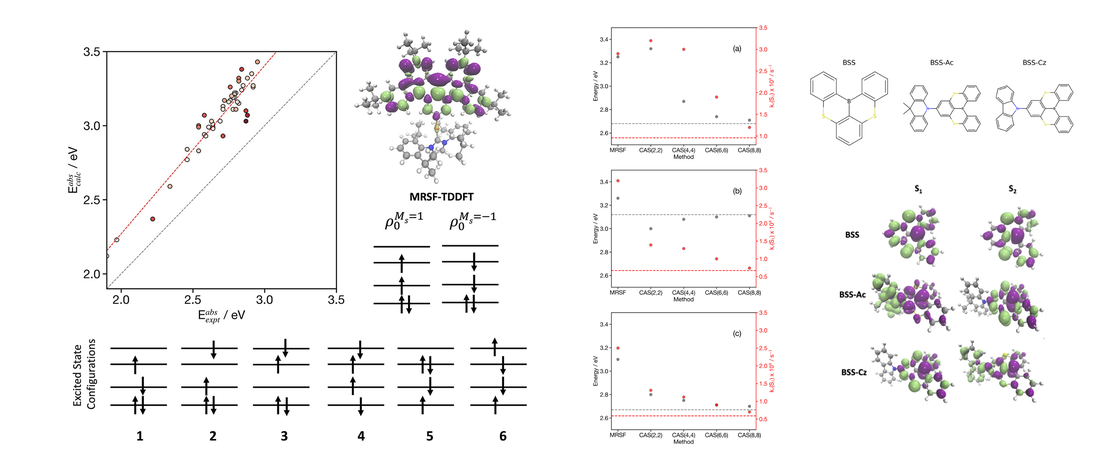
Modeling Photodissociation: Quantum Dynamics Simulations of Methanol
- Léon L. E. Cigrang and Graham A. Worth
- Publication
- August 28, 2024
Abstract:
A comprehensive computational study of the gas-phase photodissociation dynamics of methanol is presented. Using a multiconfigurational active space based method (RASSCF) to obtain multidimensional potential energy surfaces (PESs) on-the-fly, direct quantum dynamics simulations were run using the variational multi-configurational Gaussian method (DD-vMCG). Different initial excitation energies were simulated to investigate the dependence of the branching ratios on the electronic state being populated. A detailed mechanistic explanation is provided for the observed differences with respect to the excitation energy. Population of the lowest lying excited state of methanol leads to rapid hydroxyl hydrogen loss as the main dissociation channel. This is rationalized by the strongly dissociative nature of the PES cut along the O–H stretching coordinate, confirmed by the broad feature in the absorption spectrum. In contrast, more energetic excitations lead mainly to C–O bond breaking. Again, analysis of the diabatic surfaces offers a clear explanation in terms of the nature of the electronic states involved and the coupling between them. The type of calculations presented, as well as the subsequent analysis of the results, should be seen as a general workflow for the modeling of photochemical reactions.
Additional Resources
DOI: 10.1021/acs.jpca.4c03612
Bibtex:
@article{cig24modeling,
author = {Cigrang, L{\'e}on L. E. and Worth, Graham A.},
title = {Modeling Photodissociation: Quantum Dynamics Simulations of Methanol},
journal = {The Journal of Physical Chemistry A},
volume = {128},
number = {36},
pages = {7546-7557},
year = {2024},
doi = {10.1021/acs.jpca.4c03612},
note ={PMID: 39194169},
URL = {https://doi.org/10.1021/acs.jpca.4c03612},
eprint = {https://doi.org/10.1021/acs.jpca.4c03612},
}


